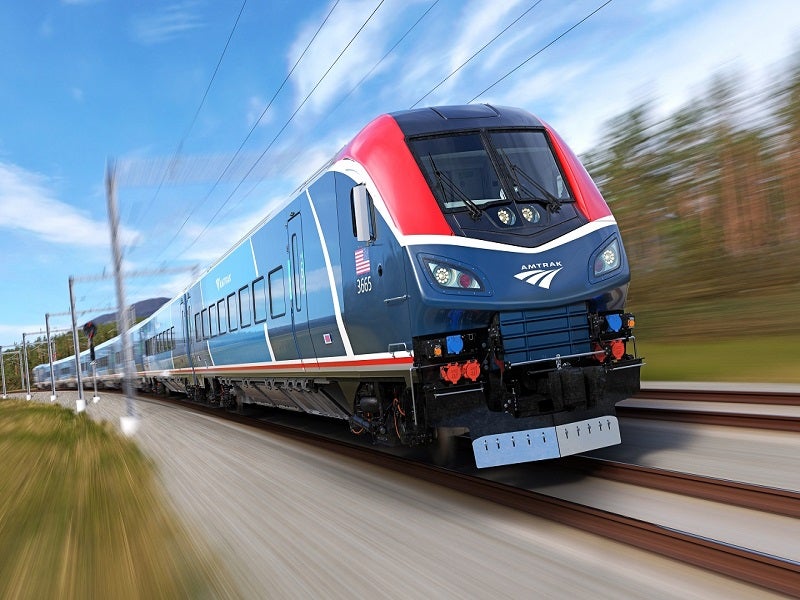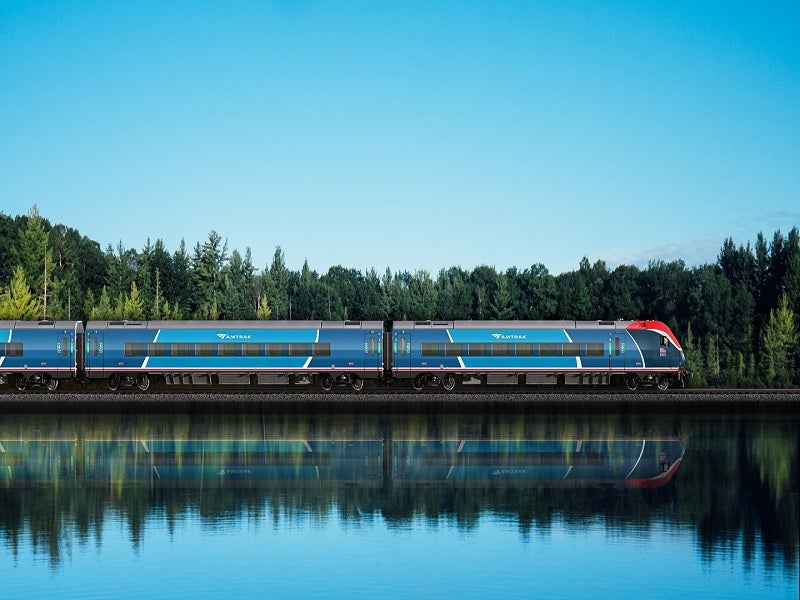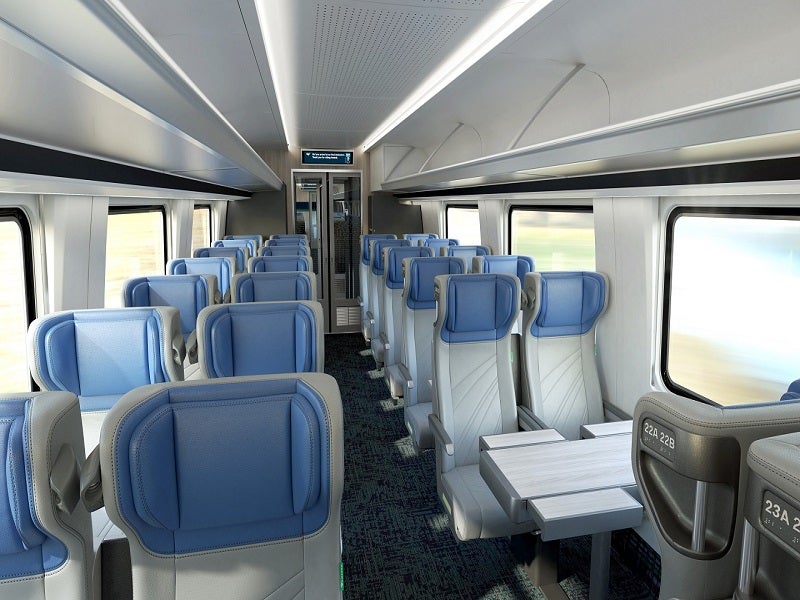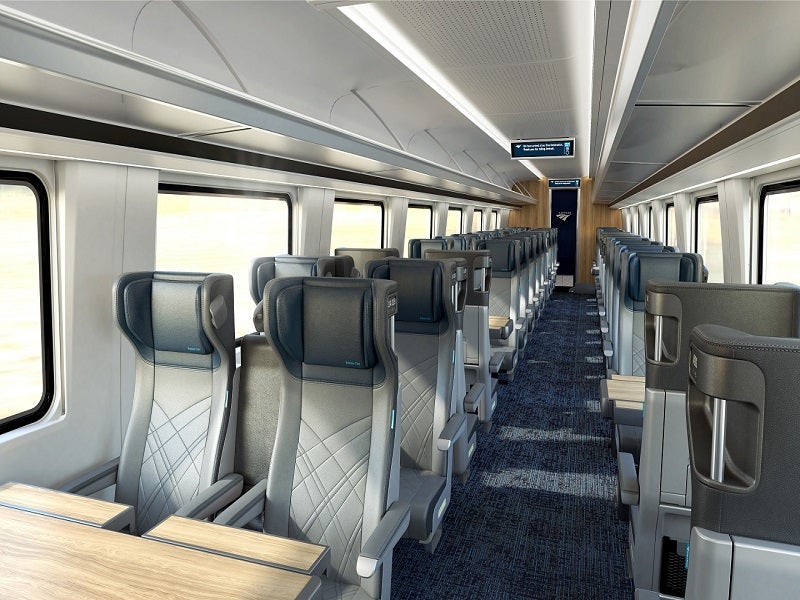Amtrak Airo™ is a state-of-the-art passenger train designed for Amtrak, a passenger rail operator based in the US.
Amtrak ordered 73 trains under a $7.3bn investment plan, announced in 2021, to replace its 40-year-old ageing fleet. The investment plan also includes facility modifications and other upgrades.
The trains were first unveiled in December 2021. Delivery will commence in 2024 while the trains will commence operations in 2026.
The new trains will operate across the country on various routes operated by Amtrak including Amtrak Northeast Regional, Empire Service, Virginia Services, Keystone Service, Downeaster, Cascades, Maple Leaf, New Haven/Springfield Service, Palmetto, Carolinian, Pennsylvanian, Vermonter, Ethan Allen Express, and Adirondack.
The Airo™ trains will improve the passenger experience through their advanced design and world-class amenities. They are set to make intercity passenger rail an even more efficient, convenient, and accessible means of transportation. The trains are expected to add 1.5 million riders a year to Amtrak’s rail services.
Amtrak Airo trains features
The new trains will have modern, spacious interiors and panoramic windows, providing a better view to passengers.
The trains will reach speeds of up to 125m/h (201km/h) and provide near-seamless transitions between power sources, eliminating the need for time-consuming locomotive swaps. They will feature remote monitoring and complete integrated digital diagnostics to provide increased reliability.
The new trains use less fuel and emit 90% lesser particulate matter when running on diesel power.
Passenger facilities
The new trains will have comfortable seats and focus on ergonomics. Each seat provides increased comfort with ample legroom, larger and sturdier tray tables, movable headrests, and a separate cup and seatback tablet holder. Customers in business class have the option of double or single seats, giving them additional flexibility.
The sustainable trainsets feature improved lighting, digital customer information systems, touchless restroom controls, dedicated individual outlets, USB connections, and onboard Wi-Fi. They also feature a redesigned café car that offers contemporary food service, with self-service options and lifts for people with reduced mobility and wheelchair users.
The train signage employs a colour-coded system to identify and differentiate cabins on the exterior and interior.
Funding
The new Amtrak Airo™ trains are being purchased using a share of Amtrak’s Infrastructure Investment and Jobs Act (IIJA) funding. The IIJA, also called the bipartisan infrastructure law, was signed in November 2021. The law will provide federal funding for five years of rail improvements in the US.
The IIJA provided $102bn for overall rail investment in the US, with $66bn from advanced appropriations and $36bn from approved funds. The $66bn new funding was mainly provided for passenger and freight rail operations. It will be used to upgrade extensive parts of the current passenger rail network in the US, reversing decades of underinvestment.
Amtrak was granted funding under the IIJA for the expansion of intercity passenger rail services on the Northeast Corridor and the National Network. The funding will be used to add new trainsets, upgrade train stations, and improve connections.
Passengers will benefit from updates to the old railway infrastructure with new bridges, rebuilt tunnels, enhanced signals, expanded sidings, crossovers, and double tracking, which will minimise delays, increase capacity and shorten journey times.
Contractors involved
The new trains will be built by Siemens Mobility, a transport solutions company and a subsidiary of Siemens, under a contract awarded in July 2021. The trains will be manufactured at Siemens’ plant in Sacramento, California.
The contract also includes the purchase of equipment, in addition to a long-term parts supply and service agreement for technical support.











